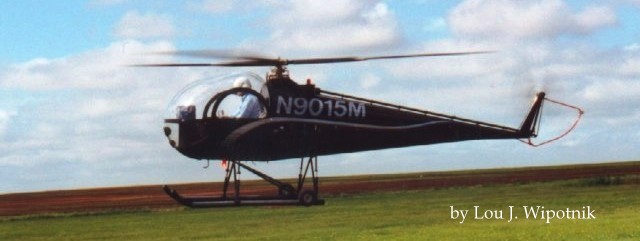In the years following my return from military service in 1967, I decided to take advantage of the GI Bill. Since I already had a Commercial ASEL, I added on a CFI-A, plus CFI Rotorcraft Helicopter. I then started instructing in the Brantly B2B helicopter in which I had received my experience at a school at Pal-Waukee Airport (PWK), in Wheeling, Illinois.
One of my former fixed-wing students decided to take lessons from me in the B2B. Norm had about 1.5 hours, when on April 12, 1975, we were practicing hover maneuvers in a somewhat strong wind. The helicopter started to spin, and I said to Norm in my reassuring instructor’s voice “I’ve got it.”
I put in opposite anti-torque (pedal) against the rotation, which had started to increase. I quickly realized I didn’t “have it,” as we were already starting to spin faster, and the outside scenery was becoming a blur. My former emergency hover training told me I should cut power and perform a hovering autorotation. But I realized we were spinning so fast that when we hit the ground (around three to five feet below) we would roll over and the helicopter would thrash itself to death, although we would probably walk away.
The only other option I could think of was to lower the collective until the skids got lightly into the grass. This slowed down the rotation a little, but the machine started to tip. I gently pulled up on the collective, stabilized and performed this procedure two more times. Finally, I got the Brantly slowed enough to set it down in a level attitude with minimal rotation.
I stepped outside and looked at the tail rotor, which was still turning. I couldn’t figure out what had just happened, but got back in and shut down the helicopter. We walked back to the flight school, with me on rather rubbery legs. Norm asked if I was scared. I told him, yes; once I shut down the helicopter and realized what had just taken place.
Much later, I was told that a mechanic had used an unauthorized part to replace the shaft that runs from the tail rotor gear box to the pitch-change mechanism of the tail rotor blades. When the RPM was low the shaft would turn, so on the ground it looked just fine, but when it broke, the tail rotor had no effect. It all goes back to the old adage; “Fly the aircraft and keep control all the way to touchdown.”
P.S. Norm went on to solo the Brantly B2B, and I received my ATP Helicopter in Dec. 1997.
- by Lou J. Wipotnik, ATP – MCFI
CFI – A/M/G/AI/RI/RH/RG

